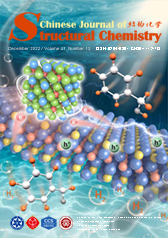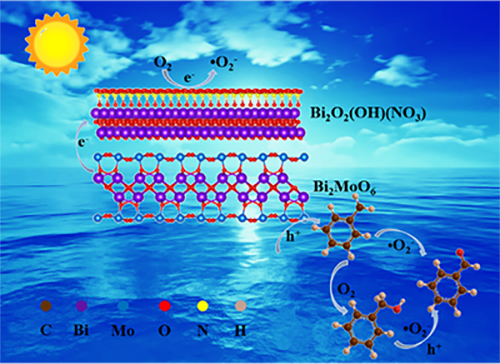
Cover Picture
Ultrathin ZnIn2S4 Nanosheets
Supported Metallic Ni3FeN for Photocatalytic Coupled Selective
Alcohol Oxidation and H2 Evolution
Mengqing Li, Weiliang Qi, Jiuyang Yu, Lijuan Shen, Xuhui Yang, Siqi Liu* and Min-Quan Yang*
Submit a ManuscriptOne-Pot Synthesis of Bismuth Basic Nitrate-Bi2MoO6 Photocatalyst
for Selective Oxidation of Toluene
Tian-Qin Zeng, Lang Chen*, Bing-Hao Wang, Sheng Tian, Zhang-Jun Bai, Xiong Wang, Jun-Kang Guo* and Shuang-Feng Yin*
Chin. J. Struct. Chem. 2022, 41, 2212025-2212032 DOI: 10.14102/j.cnki.0254-5861.2022-0149
December 2, 2022
Bi2MoO6, basic bismuth nitrate, heterojunction, photocatalysis, selective oxidation of toluene
ABSTRACT
The
key issues to improve the performance of photocatalysts for selective oxidation
of toluene are promoting the migration and separation of charge carrier, and
enhancing the generation of active oxygen species. It is known that the
construction of compact heterojunction is an efficient protocol to inhibit
photogenerated electron-hole recombination. In this work, a 2D-2D [Bi6O6(OH)3](NO3)3·1.5H2O-Bi2MoO6 (denoted as BBN-BMO) composite heterojunction has been
prepared by one-step hydrothermal method for the first time. The tetragonal phase BBN in the composite
plays the role of transferring electrons from the visible light activated
orthorhombic phase BMO and promoting the generation of active •O2-,
the holes left in BMO are used to activate toluene and produce benzyl radical,
thus greatly improving the photocatalytic performance for selective
oxidation of toluene. The toluene conversion rate of BBN-BMO is 3466 μmol·g-1·h-1,
which is three times that of pure BMO. The selectivity to benzaldehyde is
94.2%. In addition, reasonable mechanism has been speculated based on a series
of control experiments.







